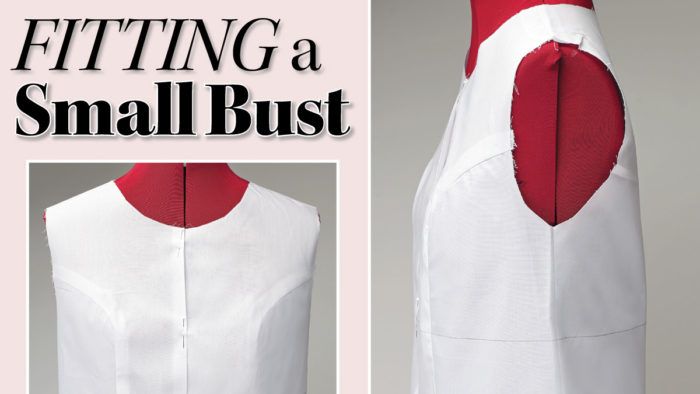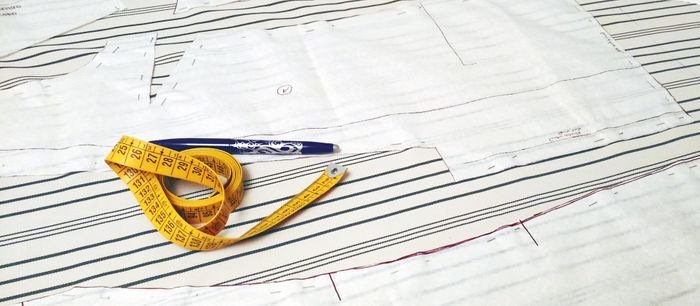Pattern Adjustments to Fit a Small Bust
Work from a muslin or pattern to reduce width and length
If you typically find that garments are too loose over and around the bust, you may need to make a small-bust adjustment. Commercial patterns are drafted for a B-cup bust, where the full-bust circumference is 2 inches larger than the upper chest circumference (above the bust). If the difference in your measurements is less, there’s a chance the front bodice pattern includes too much length and width.
Current demographics show that more individuals are full-busted, and there’s a lot of information available on making full-bust adjustments. A proportional fit is best on any figure, though, and it can be difficult to determine when a design incorporates too much volume for a small-busted person. I’ll show you how to diagnose a small-bust fitting issue on a muslin, and how to adjust a pattern to produce a better fit, whether with darts or princess seams. It can be empowering to know several ways to adapt different styles.
You’ll start by trying on a muslin test garment, and analyzing the fit. By comparing what you see to the following images and descriptions, you can decide where and how much excess fullness exists in the original pattern. Then, based on any adjustments you marked or pinned on the muslin, you can adjust the pattern to remove the length, width, or shaping you don’t need. It’s important to remember that fitting a bodice involves getting the right overall circumference around the bust and the correct amount of shaping to accommodate the chest and bust projection (the distance the bust apex projects forward from the surface of the chest wall). The standard darts or princess seam curves included in a pattern may be too large, or even too small, for your figure, even if you are small-busted. While this article might appear to be…
Start your 14-day FREE trial to access this story.
Start your FREE trial today and get instant access to this article plus access to all Threads Insider content.
Start Your Free TrialAlready an Insider? Log in






Thanks for this article. The information was great, but I would also love to see something that includes fitting a mature small bust. That type of bust usually rests lower and presents problems.
I totally agree
These are excellent points. These methods work for a lower bust in much the same way. You'd need to lower the dart or the princess seam shaping. We unfortunately didn't have a model or dress form to work with for this article that represented a lower bust point (ask me how hard it was to find a small-busted form at all!).
We are hopeful that, in the next year or so, it will be safer for us to work with "real people" models who have some of the common fitting issues that are discussed in articles or requested by readers, including fitting for a lower bust.
Carol Fresia, Senior Technical Editor
Wearing a mask (as I always do these days), I would gladly volunteer to be a model for a "mature series" of common fitting issues, but you are probably located far from me, so I guess we'll have to wait! Thanks though for keeping this idea on the burner for future articles!